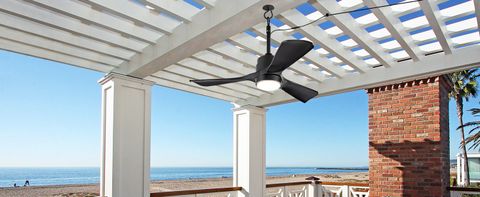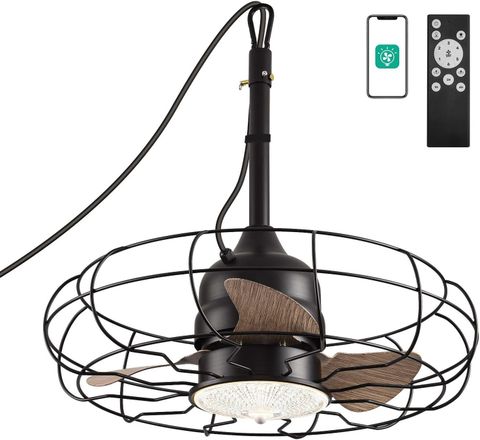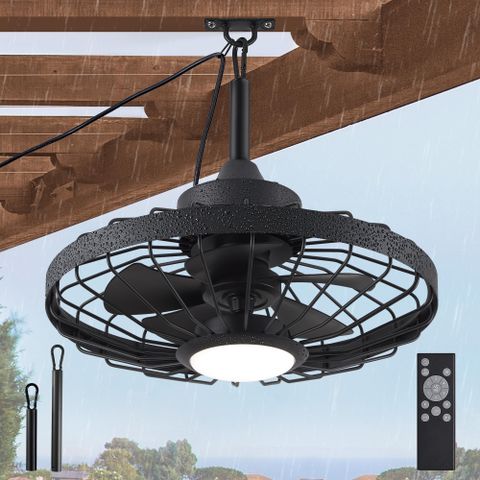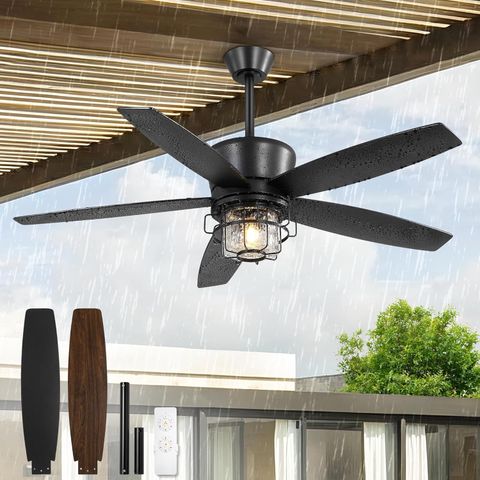Picture this: You’re relaxing on your patio on a sweltering summer evening. The sun is setting, the breeze is gentle, and you want to enjoy some fresh air. But wait – the fan isn’t running. No worries, because with outdoor fans and remote wall switches, you can control your comfort from anywhere in your home. These aren’t just fancy gadgets; they’re game-changers for outdoor living spaces.
Outdoor fans have become essential additions to modern homes, especially in regions with warm climates. But what happens when you’re inside the house and want to control your outdoor fan? That’s where remote wall switches come in. These devices transform ordinary outdoor fans into smart, convenient features that enhance your outdoor living experience. Whether you’re entertaining guests or simply enjoying a quiet evening, having the ability to control your outdoor fan remotely can make all the difference. Let’s explore what makes these systems so special and how they can benefit your lifestyle.
What Are Outdoor Fans with Remote Wall Switches?
At their core, outdoor fans with remote wall switches combine traditional ceiling fan technology with modern wireless control systems. These fans are specifically designed to withstand outdoor conditions like rain, humidity, and temperature fluctuations. The remote wall switch acts as a bridge between your indoor living space and the outdoor fan. Instead of walking outside to flip a switch, you can control the fan from inside your home. This setup works particularly well for patios, decks, covered porches, and outdoor dining areas.
The technology behind these systems typically involves a receiver unit mounted on the fan itself, paired with a transmitter mounted on the wall. When you press a button on the remote, it sends signals through radio waves to activate or adjust the fan. Many modern versions even offer multiple speed settings, light controls, and timer functions.
Benefits of Installing Remote Control Systems
There are several compelling reasons why homeowners choose outdoor fans with remote wall switches:
• Convenience: No more getting up to turn off or adjust fans
• Energy Efficiency: Better control means less wasted power
• Extended Lifespan: Remote operation reduces physical wear on switches
• Safety: Less need to venture out during bad weather
• Entertainment Value: Perfect for hosting gatherings
Think about it – you’re hosting a backyard barbecue. Guests are mingling, music is playing, and everyone’s comfortable. But then the wind picks up, or someone mentions how hot it’s getting. With a remote-controlled system, you can quickly adjust the fan speed without anyone leaving the party. That’s convenience that actually matters.
Types of Remote Control Systems Available
Not all remote systems are created equal. Here are the main categories you’ll encounter:
Infrared (IR) Systems: These require line-of-sight between the remote and receiver. They’re reliable but limited in range.
Radio Frequency (RF) Systems: More versatile, these work through walls and offer better range. They’re generally more expensive but offer superior performance.
Bluetooth Systems: Modern and user-friendly, often integrated with smartphone apps. These provide the most flexibility but may have connectivity issues in certain environments.
Z-Wave and Zigbee: These are part of larger smart home ecosystems. They offer excellent integration with other smart devices but require additional setup costs.
When choosing, consider factors like signal strength, battery life, ease of installation, and compatibility with existing systems. Some systems even allow multiple remotes, so you can control the fan from different locations.
Installation Considerations and Requirements
Proper installation is crucial for both safety and performance. Before diving in, consider these key factors:
• Electrical Wiring: Most outdoor fans require dedicated electrical circuits. Check local codes and possibly hire a licensed electrician
• Weatherproofing: Ensure all components are rated for outdoor use
• Mounting Location: Choose spots that won’t interfere with furniture or activities
• Power Source: Verify adequate electrical supply at the installation site
It’s worth noting that many people attempt DIY installations, but professional installation ensures compliance with safety standards. For example, if you’re installing a fan on a covered porch, you might need to ensure the electrical box can handle the load and that the mounting hardware is appropriate for the structure.
Maintenance and Longevity Tips
Like any outdoor equipment, proper maintenance extends the life of your fan and remote system. Here are some practical tips:
• Regular Cleaning: Dust and debris can affect performance and balance
• Check Connections: Loose wires or corroded connections can cause malfunctions
• Battery Replacement: Most remotes use standard batteries that need replacing every 6-12 months
• Weather Protection: Keep electronics dry and protected from moisture
Consider what happens when a fan stops working during a heat wave. It’s not just inconvenient – it’s potentially uncomfortable. Regular maintenance prevents these situations. Think about scheduling quarterly checks, especially before peak summer months. This routine attention pays dividends in reliability and peace of mind.
Cost Analysis and Value Proposition
Investing in outdoor fans with remote switches involves both upfront and ongoing costs. Typical price ranges vary significantly based on features:
• Basic systems: $100-$300
• Mid-range systems: $300-$700
• High-end systems: $700-$1500+
Additional considerations include:
• Professional installation ($100-$300)
• Electrical upgrades ($50-$200)
• Replacement batteries ($10-$30 annually)
When evaluating cost, consider the value proposition carefully. A $500 investment in a quality system might save you hundreds in energy costs over time, while providing convenience that enhances your daily life. Plus, well-designed outdoor spaces can increase property value. If you’re planning to sell, potential buyers often appreciate these modern conveniences.
Outdoor fans with remote wall switches represent more than just technological convenience – they’re investments in comfort, safety, and lifestyle enhancement. Whether you’re looking to create a more enjoyable outdoor dining experience, improve your entertainment space, or simply make your backyard more usable year-round, these systems deliver real value. The key is understanding what you need, choosing the right system for your specific situation, and maintaining it properly. As outdoor living continues to grow in popularity, these systems will likely become even more sophisticated and integrated into smart home ecosystems. The future of outdoor comfort is already here, and it’s just a button press away.














